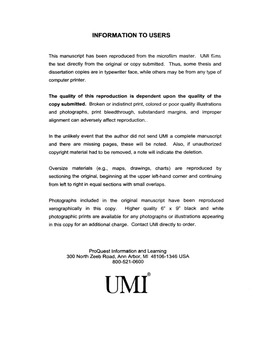| dc.contributor.advisor | Hoagland, Bruce, | en_US |
| dc.contributor.author | Micozzi, Mark Richard. | en_US |
| dc.date.accessioned | 2013-08-16T12:18:21Z | |
| dc.date.available | 2013-08-16T12:18:21Z | |
| dc.date.issued | 2001 | en_US |
| dc.identifier.uri | https://hdl.handle.net/11244/353 | |
| dc.description.abstract | This research focuses on landscape level patterns in a semi-arid environment, which consists of mesas and canyons in northwest Oklahoma. Among the state's most botanically unique and topographically complex areas, it lies at a crossroads defined by four major biomes that contribute to the local species richness and diversity. The main goal of this research is to evaluate the effect of spatial heterogeneity at the landscape and sub-landscape scale on the distribution of vegetation at Black Mesa, a spatially complex and naturally fragmented landform. This research will focus on how species richness and diversity and its pattern are related to vegetation composition, geomorphology and topography, and landscape structure at the landscape and sub-landscape scales. It is hoped that the results of this research will add to a growing body of literature, which focuses on how species richness and diversity respond to different levels of spatial heterogeneity at different scales. | en_US |
| dc.description.abstract | Lastly, the production of vegetation and geologic maps demonstrated that the underlying spatial pattern of the geologic substrate was reflected in the broad patterns of vegetation. Additionally, surface geology, defined by rock cover and rock size better explained patterns of woody vegetation patterns at Black Mesa. | en_US |
| dc.description.abstract | It was also determined that species richness and diversity appear to be affected by slight differences in size and amounts of surface rock. High species richness and diversity were linked directly to intermediate levels of spatial heterogeneity, defined by moderate habitat structure representing ecotones. Outside of these transitional areas (ecotones), species diversity increased in more spatially complex environments whereas species richness increased in less spatially complex environments. Intermediate levels of shrub abundance at the landscape level defined high levels of species richness and diversity whereas intermediate levels of grass abundance and medium sized rocks defined high levels of species diversity. These larger scale patterns of species richness and diversity added to the understanding of smaller scale patterns of species richness and diversity at Black Mesa. | en_US |
| dc.description.abstract | The research presented here demonstrated that the effect of spatial heterogeneity at the sub-landscape scale had the most impact on species richness and diversity. Increased spatial heterogeneity and habitat fragmentation at Black Mesa were defined by an increase in the number of patches, total edge and smaller patch sizes. Increased slope, rock cover and medium to large rocks, which proved to be major factors increasing species richness and diversity, dictated the degree of spatial heterogeneity and fragmentation. | en_US |
| dc.format.extent | xxv, 179 leaves : | en_US |
| dc.subject | Biotic communities. | en_US |
| dc.subject | Biology, Ecology. | en_US |
| dc.subject | Vegetation and climate. | en_US |
| dc.subject | Ecological heterogeneity. | en_US |
| dc.subject | Vegetation boundaries. | en_US |
| dc.subject | Phytogeography. | en_US |
| dc.subject | Physical Geography. | en_US |
| dc.subject | Species diversity. | en_US |
| dc.title | The effect of spatial heterogeneity and environmental gradients on vegetation in a semi-arid environment: Black Mesa, Cimarron County, Oklahoma. | en_US |
| dc.type | Thesis | en_US |
| dc.thesis.degree | Ph.D. | en_US |
| dc.thesis.degreeDiscipline | Department of Geography and Environmental Sustainability | en_US |
| dc.note | Source: Dissertation Abstracts International, Volume: 62-06, Section: B, page: 2652. | en_US |
| dc.note | Adviser: Bruce Hoagland. | en_US |
| ou.identifier | (UMI)AAI3018338 | en_US |
| ou.group | College of Atmospheric & Geographic Sciences::Department of Geography and Environmental Sustainability | |
